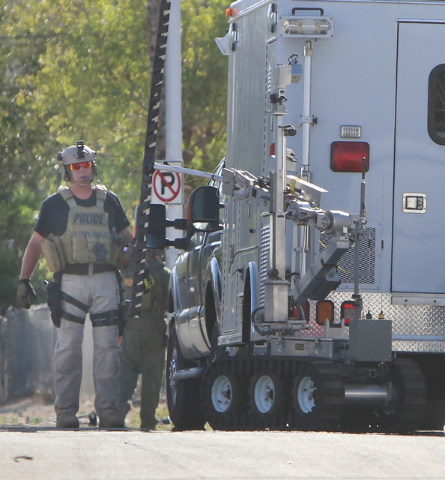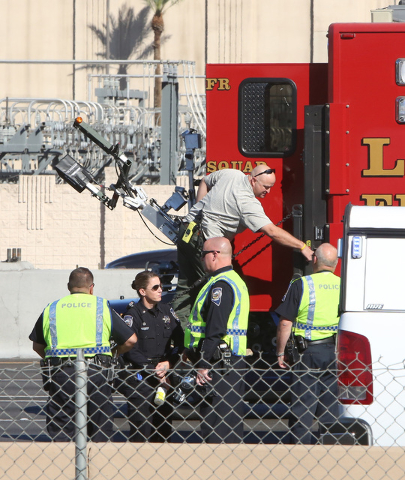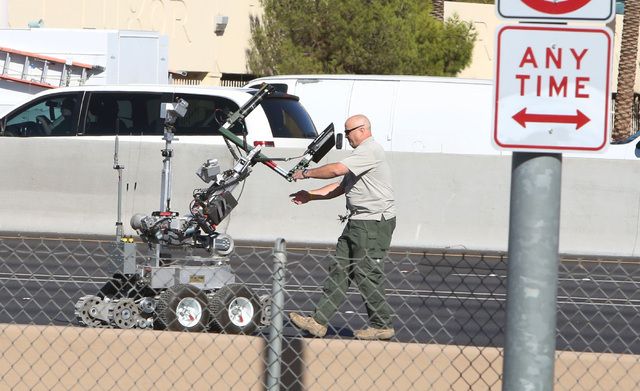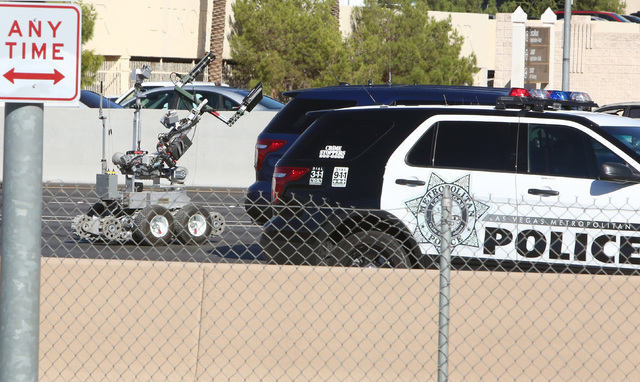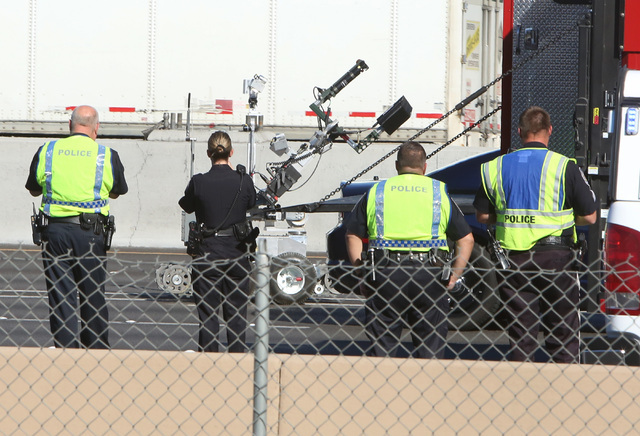Would Metro police consider using a bomb robot?
After an hourslong standoff in the second story of a Dallas community college with a suspected cop killer, police sent in the cavalry: a bomb squad robot mounted with a C4 explosive.
The tactic has been called unprecedented and reignited old questions about police militarization. But academic policing experts in Las Vegas and Dallas said the shooting in Dallas was equally unprecedented, and they suggested the tactic was both ethical and legal.
Officials have said Micah Xavier Johnson, 25, used his Army training to shoot two civilians and 14 officers — five of them fatally — before officers cornered him on the night of July 7.
For hours, officers had exchanged gunfire and tried to negotiate with Johnson, but it wasn’t going well. Dallas Police Chief David Brown told CNN that he was thinking of the SWAT team.
“We had negotiated with him for about two hours, and he just basically lied to us, playing games, laughing at us, singing, asking how many did he get and that he wanted to kill some more and that there were bombs there, so there was no progress on the negotiation,” Brown said on CNN. “I began to feel (in a split second) he would charge us and take out many more before we would kill him.”
Brown was preparing to brief Dallas’ reporters on the night’s tragic events and had sent out the command that he wanted a plan to end the standoff.
“I said use your creativeness to come up with a plan to do it. When I got back from the press conference they presented to me what was probably a 15-minute plan they put together to improvise our robot with a device to detonate behind the corner within a few feet of where he was that would take him out,” he said. “I approved it and I would do it again if presented with the same circumstances.”
Police first made contact with Johnson about 11 p.m., and roughly four hours passed with police deadlocked with the suspect.
Two officers then equipped a commonplace bomb squad robot — a Remotec Andros Mark V-A1 that the department bought in 2008 for $151,000 — with C4 explosives.
Johnson was killed in the remote-controlled blast.
Does the Metropolitan Police Department have the capability to deploy a robot with a bomb as well?
“It wouldn’t be something I would say publicly,” Clark County Sheriff Joe Lombardo said shortly after the Dallas shooting.
“It was a bold move what they did there,” Lombardo said. “It’s unfortunate it had to end that way, but that was a decision they made.”
William Sousa, director of UNLV’s Center for Crime and Justice Policy, pointed to the deadly situation Dallas police were in and said the goal of not putting officers any further into harm’s way made sense, even with the use of a robot with a bomb.
“If it’s not the first time, it’s certainly unusual,” he said of the tactic.
Explosives, on their own, aren’t new for police. Officers in Orlando, Florida, used an explosive to end the deadly Pulse nightclub shooting. “Flashbangs” are commonly used by SWAT units across the country.
Military tactics used in specific situations aren’t likely to cause much of a stir with the general public, Sousa said. Only if those tactics are overused does the public gets upset.
That’s why many police departments, including Dallas’, don’t respond to large protests with armored trucks and SWAT gear. Those that do are often the departments subjected to the most scrutiny.
The issue is the “overt appearance,” he said.
Deploying a robot with a bomb isn’t much different than an officer firing a gun, Sousa said. Officers, trained to fire at a suspect’s “center mass” when lethal force is warranted, reasonably expect that those shots may be fatal.
“A firearm is inherently deadly,” he said.
University of Texas, Dallas professor Robert Taylor teaches criminal justice and researches police responses to terrorism.
Taylor called the robot bomb a unique situation and said he believes the deadly force used against Johnson was justified, because it conforms to the “objective reasonableness” test used by courts, meaning that an officer’s actions will be justified if another officer in the same situation would reasonably take the same action.
“He definitely did the shooting,” he said. “The guy talked about planting bombs. There was a lot of indication there was more to the attack.”
Taylor said he wouldn’t advocate for robots with bombs to be used regularly, but if the Dallas shooting proved anything, it’s that the police need to be able to respond to any situation.
Contact Wesley Juhl at wjuhl@reviewjournal.com and 702-383-0391. FInd @WesJuhl on Twitter.





